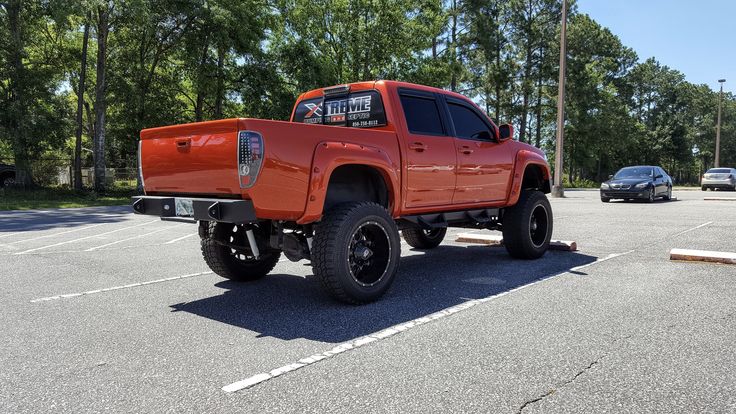Anyone who has seen a monster truck in action is well aware of how astounding they are to behold, especially when it comes to the size and strength of their tires.
The cost of a tire varies depending on the specific product, but you may expect to spend anywhere from $1,500 to more than $3,000 per tire, with luxury brands costing much more.
Monster truck tires are generally more costly than the tires found on a conventional automobile or truck. This is due to the fact that they are much bigger in size, which implies that they need significantly more rubber and material in their production. This article will tell you all you need to know about how much they are going to run you. The fact that monster truck tires are of such massive size and need such a significant financial commitment makes them difficult to get.
What's In This Guide?
When it comes to Monster Truck tires, they are referred to as flotation tires because they were initially built so that the agricultural equipment that utilizes them may float somewhat over wet, muddy fields rather than sinking into the mud and becoming stuck.
The weight of one tire alone, without the rim, may range anywhere from 800-900lbs; when multiplied by four, tires account for about one-third of the truck’s typical 10,000lb weight of 10,000lbs. In a single season, a team might go through as many as eight sets of tires. Tires may range in price from $250 to $7500 per set.
Despite their size and sturdiness, the tires of the trucks bend a significant amount as a result of the weight of the trucks on them. This usually only lasts for a fraction of a second, but on rare occasions, the tires bend to the point where the rims of the wheels make contact with the surface of the ground. Some drivers overinflate their tires in order to counteract this. This, on the other hand, increases the likelihood of tire blowouts.
Tread PatternThe tread pattern of a monster truck tire is one of the most distinguishing characteristics of the tire design. In contrast to monster truck tires, agricultural tires feature a basic tread pattern consisting of deep, sharp V-shaped or alternating stripes (depending on the manufacturer) designed to offer traction in mud or loose dirt without being blocked with earth.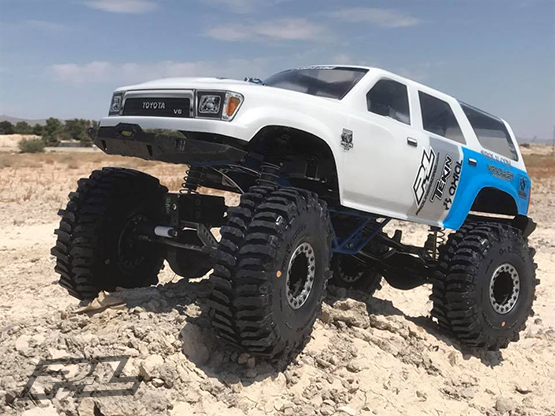
This tread is customized by the team for use on monster trucks, generally by removing a portion of the rubber via the process of “cutting.” Tire cutting, on the other hand, is done for more than simply aesthetic reasons, since various tire treads have varying levels of performance. Additionally, tire cutting is performed to fit the driver’s driving abilities as well as the driving circumstances in which the vehicle will be used. A reduction in overall tread depth, which helps to decrease weight and promote flexibility, as well as rounding the edge of tread along the sidewall, making it simpler for drivers to bring the truck back up after landing on the edge of the tire after a jump, are the most typical modifications implemented. Cutting each individual tire requires around 50 consecutive hours of continuous work.
Are Monster Truck Tires Expensive?A monster truck tire is often constructed of high-quality rubber that is capable of withstanding the rigors of off-road driving situations. Therefore, the price of a monster truck tire will vary based on the manufacturer, size, and design of the tire.
Therefore, the price of a monster truck tire will vary based on the manufacturer, size, and design of the tire.
Monster truck tires may cost anywhere from $1500 to more than $3,000 per tire, depending on the manufacturer. The more costly tires are often constructed of more durable materials and have superior tread patterns that provide more grip on a wider range of terrain than the less expensive tires. They are also exceedingly large and complicated to construct.
Monster truck tires are far more costly than standard automobile tires. Given that monster trucks weigh around 10,000 pounds, they must be built with more strength and accuracy than any other kind of tire on the market.
Monster truck tires are an important component of the vehicle, and the tires of a monster truck must be in excellent condition at all times or they may do significant damage to the vehicle. The cost of new tires varies based on the size and kind of tire, therefore it is vital to receive a quote from a technician before making a purchase decision.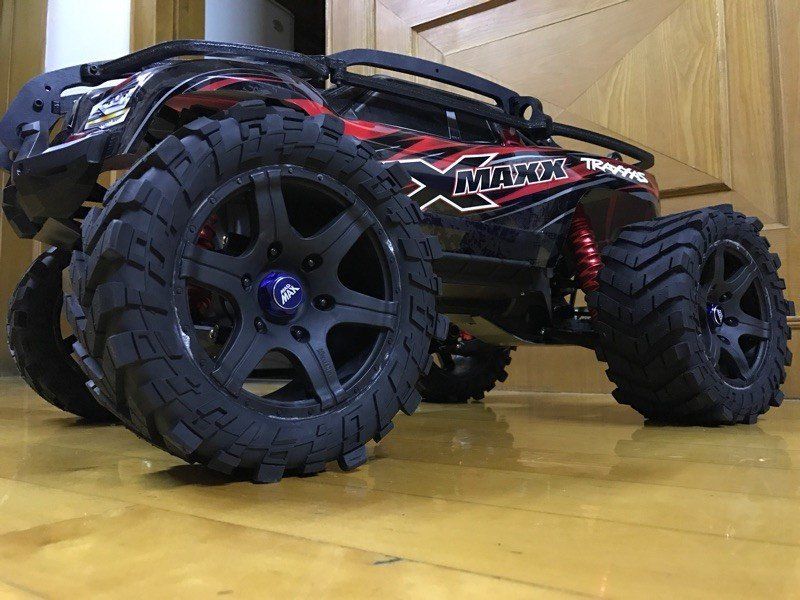
A set of monster truck tires is the most costly set of tires available on the market. They are constructed of high-quality rubber that is capable of withstanding tremendous pressure.
There are a variety of factors that contribute to the high cost of these tires, but the most prevalent is their high quality. Monster truck tires must be able to resist the rigors of lengthy, arduous races and severe pressure without experiencing any serious problems or decrease in performance. It is possible to get these tires for as little as $1500 or as much as $3,000 depending on their size and tread pattern.
There are many reasons why monster truck tires are so pricey. It should go without saying that these are not your typical tires for the first and most apparent reason. They are designed to withstand the tough terrain and sharp things that monster trucks encounter on a daily basis in their daily operations.
Another explanation is that there is a scarcity of these tires as a result of the rising popularity of monster truck racing. Because they are not mass manufactured in the same way that regular tires are, high-quality items are more difficult to come by.
Because they are not mass manufactured in the same way that regular tires are, high-quality items are more difficult to come by.
It is also difficult to locate replacement tire providers who specialize in this kind of specialty tire. Because there are only a few businesses that can manufacture these kinds of tires, when an order comes in, it must be completed before the company can go on to the next order in line.
Monster truck tires are built for rough terrain, and they can often resist off-road conditions that would cause conventional automobile tires to fail.
Nevertheless, these tough tires come at a cost, since they are much more costly than standard passenger vehicle tires. For those who are intrigued by the prospect of seeing these tires in action, the best option is to attend a local monster truck exhibition in your area.
Where Can You Buy Monster Truck Tires?Original monster truck tires are difficult to come by. And even if you do manage to track them down, they are incredibly costly. Because these tires are rare to pull by in shops, monster truck enthusiasts must purchase them over the internet.
Because these tires are rare to pull by in shops, monster truck enthusiasts must purchase them over the internet.
Another location to seek monster truck tires is in your local region, where you may be able to find some that have been previously used for sale. This may take a little more time, but it may also provide a better opportunity to discover them at a lower price.
How Much Are Used Monster Truck Tires?Monster Truck tires are a significant investment for people who lead an active and adventurous life. The durability of these tires may be more than you realize, and if they are maintained correctly, they may survive for three years or longer, depending on the amount of their use.
Because they have a long tread life, it is fairly commonplace for people to acquire used monster truck tires in order to save money on the purchase price. Rather of paying the higher expenses associated with brand new tires, you may expect to pay $500-$800 per tire on average for used ones.
Another option is to consider purchasing a used tire instead since they are quite tough and the tread tends to hold up rather well over the course of a few years. This is in contrast to typical passenger tires, which have a shorter service life.
How Much Do Monster Trucks Weigh?Every conversation about monster trucks begins with the tires—the incredibly huge tires, to be precise.
Official monster trucks are equipped with tires that are 66 inches tall and 43 inches broad. They operate on just 8 to 10 pounds of pressure and weigh 800 to 900 pounds, making them a low-pressure vehicle.
Well-Known Brands For Monster Truck TiresBKTSince 2014, BKT tires have been on all Monster Jam trucks. Most fans condemned the decision since the tires’ thinner surface, lower weight, and smoother cut caused vehicles to easily blow their tires. BKT, who had never developed tires for monster trucks, reinforced and redesigned their tires to meet the difficulties.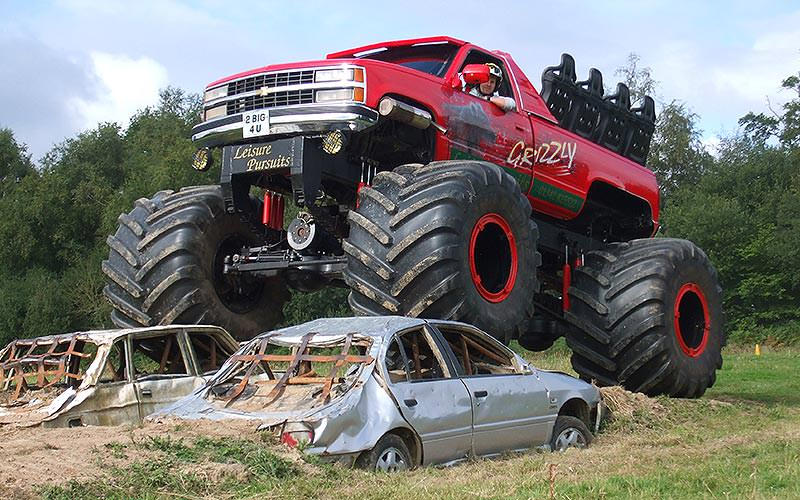 Despite the improvements, incorrect tales persist concerning tire strength and the reduction of vehicles getting crashed.
Despite the improvements, incorrect tales persist concerning tire strength and the reduction of vehicles getting crashed.
Firestone is a well-known name in monster truck tires. It features a thicker cut for better grip. This brand has been utilized on most trucks outside of Monster Jam from the beginning. Firestone has been a longstanding supporter of Bigfoot, leading to the production of the Firestone Bigfoot monster truck.
GoodyearGoodyear is another innovator in monster truck tires. It was popular in the early days of monster trucks and influenced many others.
UkraineUkraine Tires are a popular monster truck tire brand. Until BKT, most Monster Jam trucks utilized this tire. The Ukraine Tires are tougher and more durable due to their finer cut and sharper corners.
ConclusionMonster truck tires are designed with big treads to provide grip on a variety of terrain, including mud and sand. These tires may also be utilized in off-road racing contests that take place on dirt courses with steep slopes and fast speeds, such as rally racing.
A tire’s cost may depend on the given product, but you should expect to pay anywhere from $1,500 to more than $3,000 for a set of four tires.
If you have ever seen a monster truck in action, you are fully aware of how impressive they are to watch, including the size and strength of their tires.
But how much do these tires cost exactly? The price tends to range based on the exact product, but you can expect to pay anywhere between $1,500 to over $3,000 per tire and sometimes even more for premium products. These are not a light investment to make for the casual automotive enthusiast.
Monster truck tires are typically more expensive than standard car or truck tires. This is because they are so much larger in size, which means they require more rubber and more material in their construction. This guide includes everything you need to know about how much they cost.
It is not easy to get your hands on monster truck tires because they are such a large size and big investment.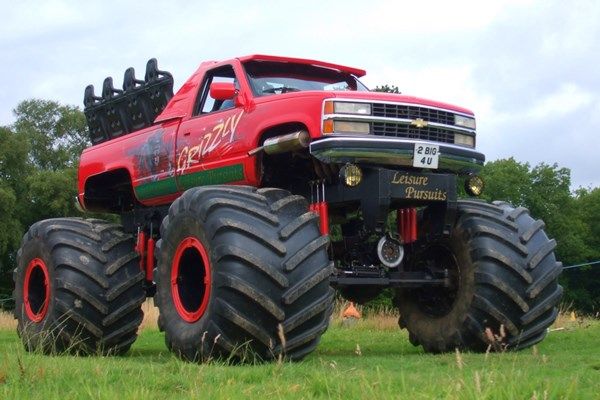 Fortunately, we were able to work with some of the top brands to get all of the information we needed to provide accurate analysis on monster truck tires in this guide.
Fortunately, we were able to work with some of the top brands to get all of the information we needed to provide accurate analysis on monster truck tires in this guide.
A monster truck tire is usually made of high-quality rubber that can withstand the rigorous conditions of off-road driving. This means that the price of a monster truck tire will vary depending on the brand, size, and type of design.
The cost for monster truck tires may be anywhere from $1500 to over $3,000 per tire. The more expensive tires are typically made with more durable materials and have better tread designs for more traction on all types of surfaces. They are also extremely big and difficult to make.
Monster Truck Tires are much more expensive than regular car tires. Considering monster trucks weigh about 10,000 pounds, they must be constructed with more strength and precision than any other tire type.
Monster truck tires are a big part of the vehicle and the tires of a monster truck need to be in perfect condition or they can cause a great deal of damage. The prices for new tires vary depending on the size and type of tire, so it is important to get an estimate from a mechanic before purchasing them.
The prices for new tires vary depending on the size and type of tire, so it is important to get an estimate from a mechanic before purchasing them.
Monster truck tires are the most expensive tires on the market. They are made of high-end rubber that can withstand extreme pressure. The price for these tires comes in around $1500 to over $3,000 per tire.
There are many reasons why these tires are so expensive, but the most common one is quality. Monster truck tires must last through long, grueling races and withstand extreme pressure without any major issues or deterioration in performance. The price of these tires ranges from $1500 to over $3,000 depending on their size and tread design.
Monster truck tires are expensive for a few reasons. The first and most obvious reason is that they are not your ordinary tires. They are made to stand up to the rough terrains and sharp objects that monster trucks face in their day-to-day endeavors.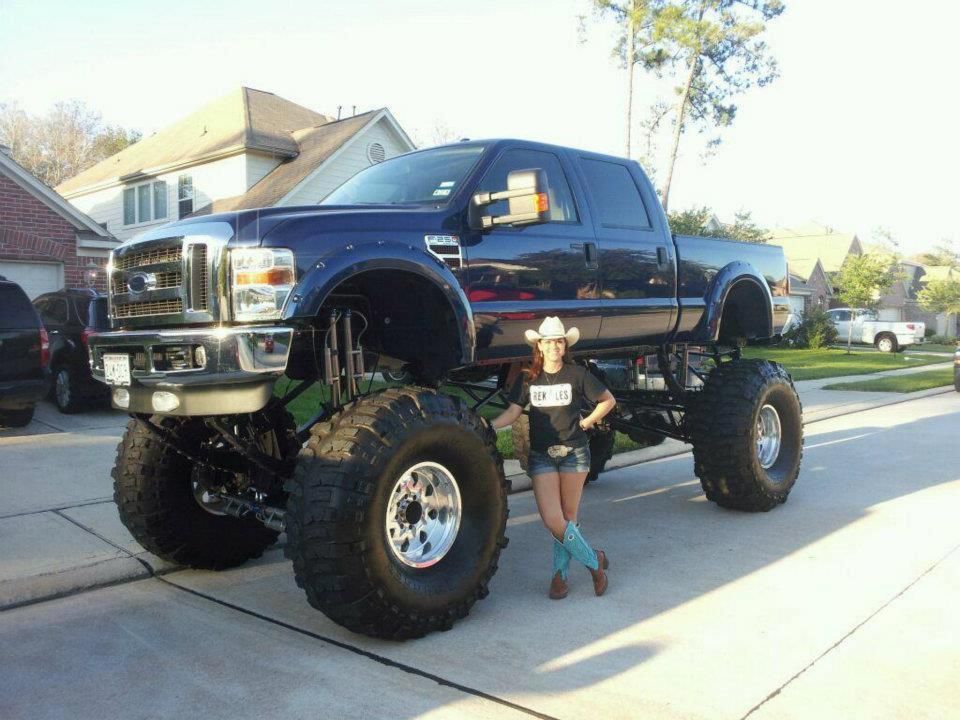
Another reason is that there is a shortage of these tires because of the increased interest in monster trucking. They are not as mass produced compared to traditional tires, so quality products tend to be rarer.
It is also hard to find replacement tire companies for this kind of specialty tire. There are only a few companies that can produce these kinds of tires, so when an order comes through, they must be filled before moving on to the next order.
Monster truck tires are expensive and not necessary to the performance of the vehicle.
Monster truck tires are designed for rugged terrain and can usually withstand off-road conditions that would destroy regular car tires.
However, these rugged tires come at a price as they are much more expensive than general passenger car tires. If you are curious to see these tires in action, the best way to do so is to check out a local monster truck show near you.
Real monster truck tires are not easy to find. And when you do find them, they are extremely expensive. Monster truck enthusiasts have to order these tires online because they are not easy to find in stores.
And when you do find them, they are extremely expensive. Monster truck enthusiasts have to order these tires online because they are not easy to find in stores.
SimpleTire is an online marketplace that specializes in selling high-quality tires. They have a wide variety of different brands to choose from, so you can get everything you need for your vehicle. They surprisingly have a wide selection of monster truck tires too.
There are other competing places to find similar deals like Speedy Tire, but we rank SimpleTire as the best option because of the fast delivery and free shipping they offer. They also offer competitive pricing deals.
Another place to consider looking for monster truck tires is in local areas where there could be used ones for sale. This might take a bit more time but it could also be a way to find them discounted too.
Monster Truck tires are a major expense for those who live a rugged lifestyle. These tires may be able to withstand more than you think so if they are taken care of properly they can last for 3 years or more depending on usage.
These tires may be able to withstand more than you think so if they are taken care of properly they can last for 3 years or more depending on usage.
Because they tend to provide a long tread life, it is not uncommon to purchase used monster truck tires to save on cost too. On average, you will see used ones going for $500-$800 per tire rather than the more expensive prices for a brand new tire.
It is also a good idea to consider buying a used tire instead because they are so durable that the tread tends to hold up well over time. This differs from traditional passenger tires with more limited wear.
Monster truck tires are specially made with large treads to keep traction in dirt or sand surfaces. These tires can also be used in off-road racing competitions that take place on dirt tracks with steep hills and high speeds.
We have included some of the top brands that manufacture reliable monster truck tires. All three of these brands sell tires online with popular retailers like SimpleTire too.
Firestone is a top producer of monster truck tires. They use a thicker, more durable tread compound to build some extremely reliable tires. They also provide excellent traction on different track types.
One of the most popular monster truck companies, Bigfoot, uses Firestone tires on all of their vehicles. They have even partnered together to build a special monster truck dedicated to the Firestone brand.
At SimpleTire, there are deep thread flotation monster truck tires that work exceptionally well and rank among the top sellers.
BKT tires are the standard for monster trucks and they have been the primary monster truck tire since 2014. These high-performing tires come at a premium price but they can even be found locally too.
This big time monster truck sponsor creates high-quality monster truck tires and they revolutionized the new modern design that is more lightweight and effective with a thinner rubber composition.
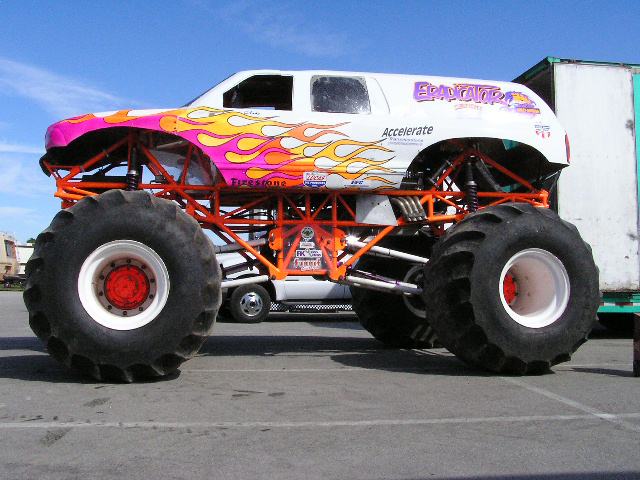 We make an off-road monster out of Corsa shorts!
We make an off-road monster out of Corsa shorts! Do you have a Traxxas Slash 2WD but want a new experience? Are you ready to change Slash and have a whole new experience? Then you will need tires and wheels from monster trucks and a small "lift" of the body. This is a very interesting way to completely "transform" your model. And the “monitoring” process itself takes no more than 30 minutes. And you can just as easily switch back to short-court mode. Sounds tempting? Let's get started!
One of the easiest tasks in our story. You will need the 2.5mm and 2mm wrenches that are included with the Slash. You remove the old racks and install new ones from the TRA1914R kit.
You remove the old racks and install new ones from the TRA1914R kit.
Don't forget to pay attention to the overhang.
The front wheels are those with the holes for mounting on the hex located deeper. Those. when properly installed, the front wheels will be deeper in the arches than the rears. And don't forget to watch the direction of the tread: if it's not set correctly, the model will move normally, but your friends will laugh if they see it. Definitely ;)
If you don't have a Stampede wheel set yet, you have a choice. You can fit Terra tires with the realistic design of real Chevrons that are used on full size monsters. They are pre-installed on Craniac, Skully and Bigfoot models.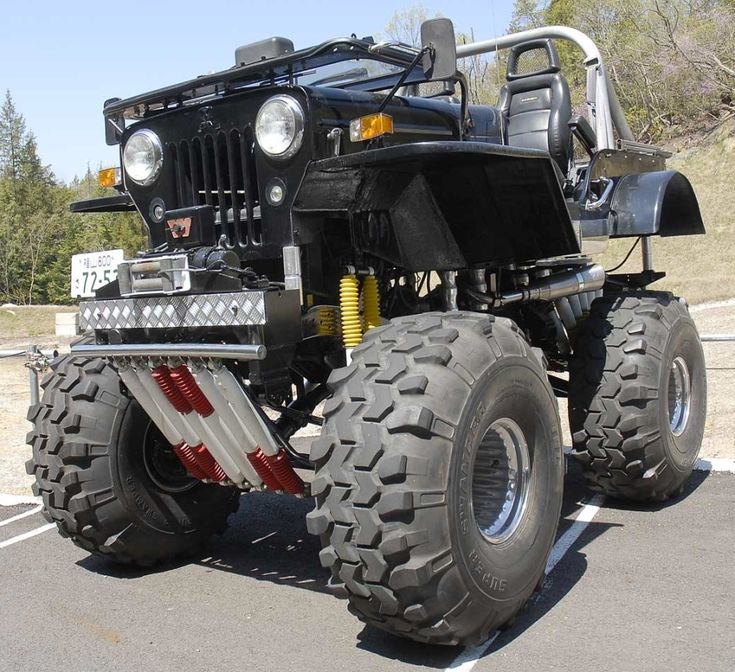 Or choose tires with Talon tread, which has a "modern" design with a strong "hook". The Terra is fitted with deep concave rims, while the Talon is available with chrome or black chrome All-Star wheels.
Or choose tires with Talon tread, which has a "modern" design with a strong "hook". The Terra is fitted with deep concave rims, while the Talon is available with chrome or black chrome All-Star wheels.
| 2.8" Talon | 2.8" Terra Groove |
After installing the body on the new struts, there may be problems with the gap between the wheel and the body.
The new wheels and tires are great for off-road adventures, but once installed with the factory body, there may be some problems. Compress the suspension so that you understand how much you need to fit (cut) the arches. Remember: it's better to measure seven times, and only then cut off, so as not to spoil the mood for yourself, and the body for the model :) Use Lexan scissors to carefully remove the excess. After the procedure, install the case again and check your work.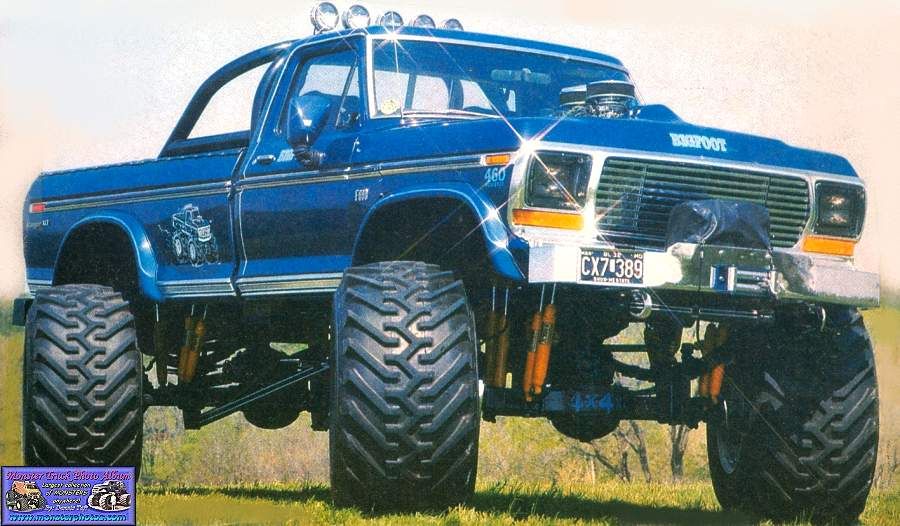 There is nothing to worry about if you need to repeat the procedure again.
There is nothing to worry about if you need to repeat the procedure again.
Monster - Slash is able to “work” with new wheels, even if even if you have not changed the gear ratio of the pinion and spur. A standard Slash wheel travels about 13 inches (33.02 cm) with each engine revolution. The larger Terra and Talon tires travel about 15 inches (38.1 cm) with each engine revolution. That extra 2 inches (5.08 cm) translates into an extra 166 feet (50.6 m) for every 1000 engine revolutions!
To avoid engine overheating, the pinon/spur ratio must be changed to match the new tires.
Slash's base gear ratio is 6T pinon and 90T spur. The Craniac, Skully and Bigfoot models use the 14T Piñon (TRA2427) and the 90T Spur (TRA4690). That would be a good balance for Monster Slash as well.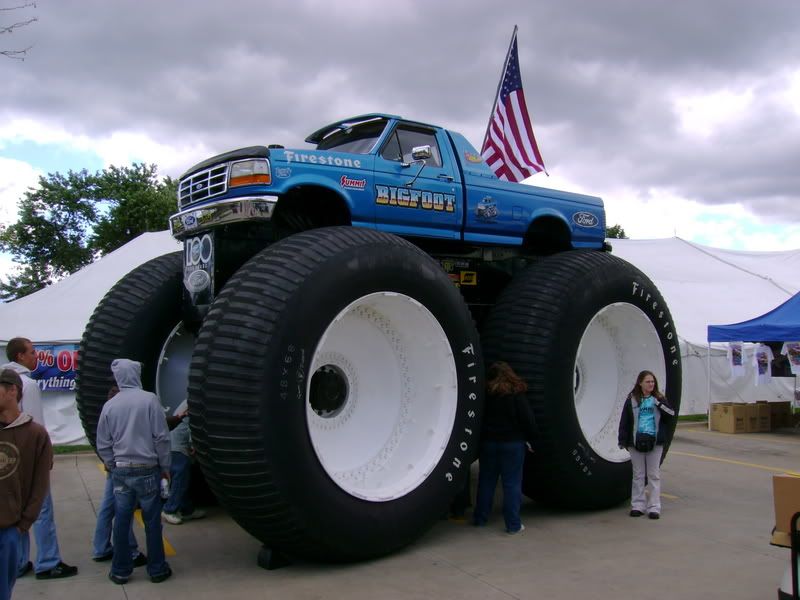
04/22/2021 09:59:33
1
590
Tags: Traxxas, slash
Traxxas TRX 4 OR TRX 6 The Traxxas TRX series models are the most versatile, capable and popular SUVs in the world. Of the nine models to choose from, there is TRX for every taste and budget. Officially licensed Ready-to-Run® model replicas, build kits to build your model, even a tracked TRX and a wild 6-wheeler - Traxxas gives you plenty of options. AT
05/13/2021
January 16, 2018 Article
Bigfoots and their motors
One dragster engine - Top Fuel "8.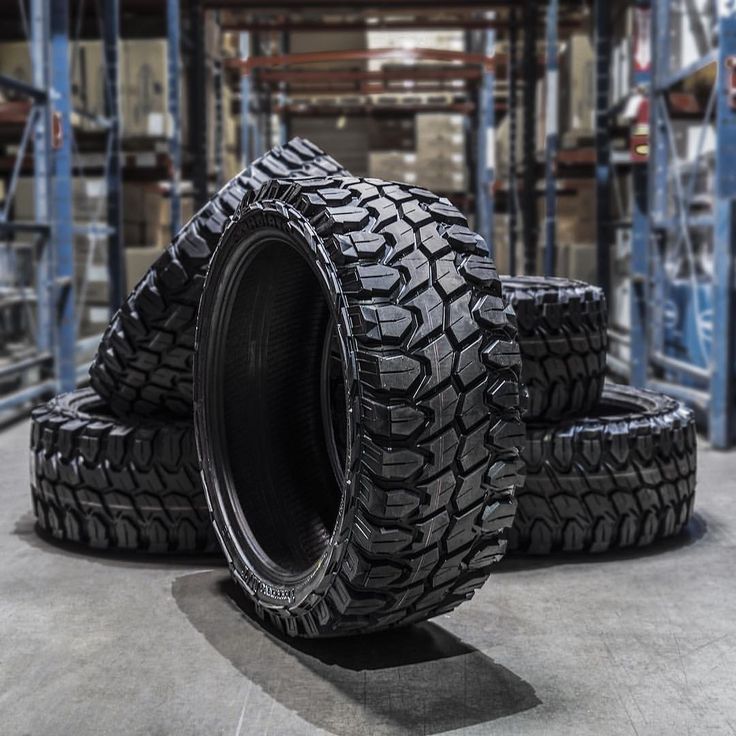 2 liter has more power than all the cars in the first 4 rows on the starting line NASCARs Daytona 500 .
2 liter has more power than all the cars in the first 4 rows on the starting line NASCARs Daytona 500 .
In maximum mode, this motor consumes 5.7 liters of nitromethanol per second; a loaded Boeing 747 consumes the same ratio of fuel but generates 25% less energy.
Stock Dodge Hemi V8 engine (425 hp (318 kW) not enough power to even crank turbocharger Top Fuel. 85 cubic meters of air compressed by " supercharger ", after adding fuel, they have a substance very close to the density of a solid, the cylinders almost bite at full load.
In order to reach 482 km/h in 4.5 seconds, a dragster must accelerate over 4G; to gain 320 km / h by the middle of the distance, the overload at the start reaches 8G. Dragster breaks the barrier over 480 km / h faster than you read this line. A Russian person will be pleased to know that from 0 to 100 km / h the car accelerates in 1.1 seconds. Top Fuel engines last about 540 starts! The speed record is 533 km/h.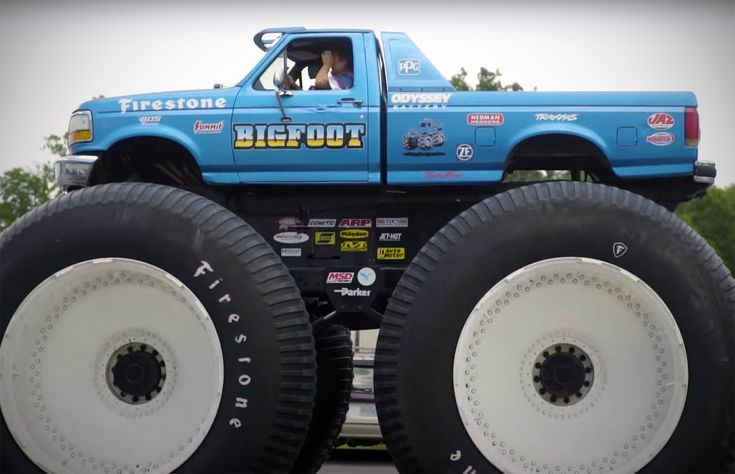 If you look at this in real life, you get the following picture: imagine that you are driving a twin-turbo Corvette, Z06, Supra, Porsche, Ferrari or Lambogini. A mile away is the Top Fuel Dragster, ready to move the moment you catch up with it. You have an undeniable advantage in the initial speed at the start. You drive the car at "legitimate" 320 km/h. “Green” lights up, the dragster moves off second. The Corvette is going at its maximum, but you can clearly hear the approaching roar and, exactly 3 seconds later, the dragster overtakes and bypasses. He wins at the finish line, exactly a quarter mile from the moment you caught up with him. Just think about it! From scratch, he scored 320 km / h and not only caught up, but also “teared” you at the finish line.
If you look at this in real life, you get the following picture: imagine that you are driving a twin-turbo Corvette, Z06, Supra, Porsche, Ferrari or Lambogini. A mile away is the Top Fuel Dragster, ready to move the moment you catch up with it. You have an undeniable advantage in the initial speed at the start. You drive the car at "legitimate" 320 km/h. “Green” lights up, the dragster moves off second. The Corvette is going at its maximum, but you can clearly hear the approaching roar and, exactly 3 seconds later, the dragster overtakes and bypasses. He wins at the finish line, exactly a quarter mile from the moment you caught up with him. Just think about it! From scratch, he scored 320 km / h and not only caught up, but also “teared” you at the finish line.
Bigfoot Kastrytsky
First, let's visit the workshop of Aleksey Kastritsky from Chita, who has been working on his new and literally grandiose project - a bigfoot with a Chevrolet Suburban body.
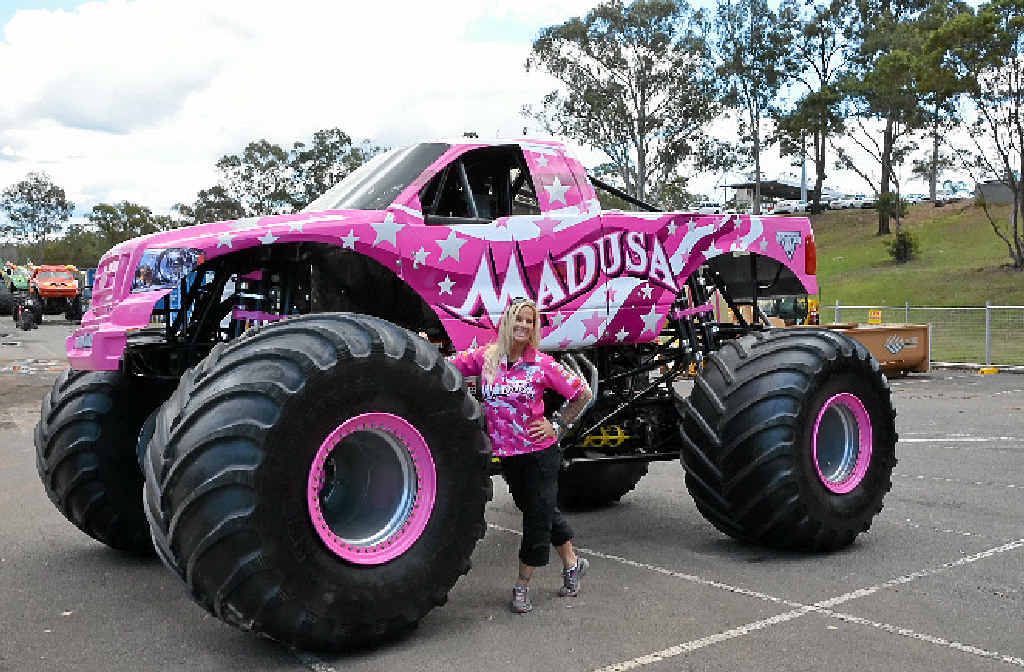
But first about something else: those of his cars that were built earlier - the trophy prototype of 2011 and the expeditionary "nurse" of 2012. The first is an original symbiosis using Japanese components and assemblies, as well as using wheel gearboxes (more on them later). In the second case, the name is only for the body, while the engine, axles and transmission as a whole are also from the "Japanese". Here they are, standing on the territory of the service "like alive", in full combat health. But the cars were by no means idle, but wound up the hardest kilometers of off-road competitions and independent trips. On their account, not just titles from exhibitions, but places of honor in cups and many-day raids into impassable places, in summer and winter, thousands of kilometers from the “base”. That is, these are by no means one-time projects for the show, but samples actually operating in extreme conditions.
These are Alexey's previous works: by no means only show cars for exhibitions, but actually working cars - winners of extreme competitions and participants in individual trophy raids.
And now a new project has matured. It is completely different than the previous two works. Not for competition, of course. The concept of this machine is formulated as follows: for throwing a group of people into difficult terrain, including where they drive only on caterpillar conveyors. You can add - for a comfortable cast, since the entire interior arrangement of the Suburban with its three rows of comfortable seats remains in its original form. Moreover, even with the third row involved, there remains a quite large cargo compartment, which will still include enough luggage for such trips.
According to Aleksey, all the previous experience of long-distance extreme trips, including single ones, has formed the need for a large SUV for difficult conditions. Actually, for this purpose, on the occasion, a standard 1995 Suburban was purchased - large, roomy, comfortable in the cabin. But it was the body with its interior, the frame and some “little things” that went into “production”.
So, the native frame of this American, in fact, a cargo category car, is quite impressive in terms of margin of safety. Yes, and rear leaf springs: they also inspire confidence in Suburban, so they went to work.
Otherwise, for the construction of the "expeditionary" bigfoot, it was necessary to look for products of a completely different origin. The 5.7-liter American V8 gasoline engine may be good in itself, but Alexei is used to dealing with simple Japanese-made atmospheric diesel engines. In addition, paired with a manual gearbox as an option, it is more reliable and unpretentious in the conditions in which you have to drive. One of the arguments in favor of the MCP is this: if water gets in, you can go, but you won’t go far with the AKP.
The search for a diesel engine was carried out among trucks with 4 and 6-cylinders, as a result, a compromise was found: the 5-cylinder Hino J07C with a volume of 6.6 liters is, in fact, a version of the more common six J08C “cut off” by one cylinder.
Atmospheric, with simple in-line equipment, without electronics - that's what you need. Paired with his own 6-speed manual gearbox.
As for the bridges, the options were not considered - from the GAZ-66, but with the wheels, and primarily tires, I did not immediately decide. A variety of options were assumed, from "shishiga" to "Kraz-lappetzhnik", and even pneumatics were studied, but for one reason or another they were not satisfied.
As a result, wheels from agricultural machinery were chosen: with 10-ply tires Kama FD-14A 21.3 R24 on converted disks from a combine. The tires themselves will also be improved: according to the existing experience, grooves will be made in the solid crossbars of the tread - this will reduce the rigidity of the tires and to some extent increase grip. The mass of one such wheel came out under 150 kg! To “fit” them, it took a body lift of 25 cm relative to the frame and another suspension lift relative to the axles of 10 cm.
Additional "cutting" of the tread crossbars has already been successfully tested on Alexey's previous trophy prototype, the same will be done on the Bigfoot.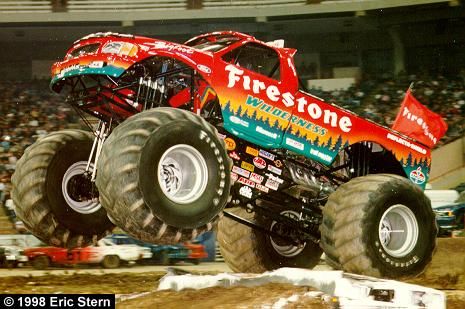
However, when the solution for docking the body and the chassis as a whole was found, the "highlight of the program" - the handout - remained in question. When they thought about this main transitional link, the native unit from Suburban "silently smoked on the sidelines" - lay indifferently in the corner of the workshop. Even from the GAZ-66, this unit looked incompetent - it would be rather weak. It was necessary to look for a suitable one at a completely different weight level.
According to measurements, the width of the bigfoot turned out to be 2.7 meters, the height is 2.75 meters, and the depth of the ford to be overcome is 2 meters. By the way, in connection with the latter circumstance, it was decided to refuse to install a snorkel.
Body lift to frame via 25 cm high supports, plus 10 cm suspension lift.
It is not known what the limiting roll angle is, but trial tests have shown that it is quite large.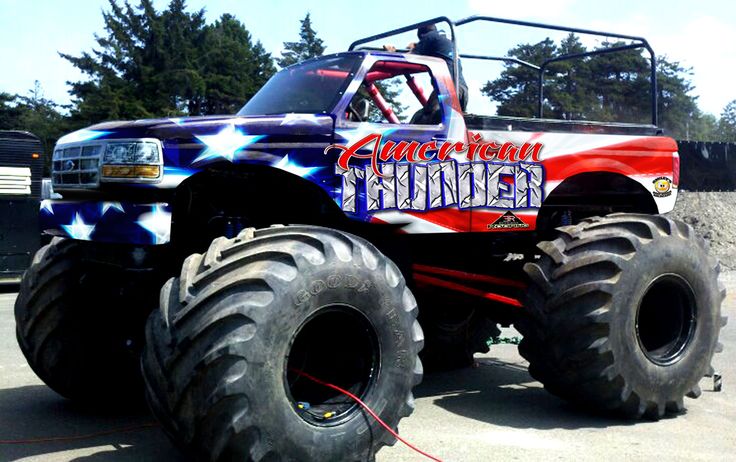
And the solutions led to the domestic product of a rare class - a razdatka from ZIL-157. It was suitable both in terms of configuration and characteristics: here both steps are lowering - one 1.16: 1, the other 2.27: 1. In addition, this transfer case, borrowed from the eminent 6X6 all-terrain vehicle with a separate (parallel) drive scheme for the rear axles, has a third output that can be usefully used. For example, to drive a water propulsion device, if the car is developed as an amphibian, this is being considered in the future.
Diesel installed Hino J 07 C is easiest to see from the side in the wheel arch: from here the most convenient access to the injection pump is actually at chest level.
Front suspension springs - from Dodge Ram , for a test drive, native and “no” GAZ-66 brakes were used, and immediately after that they started installing third-party disc brakes (front and rear).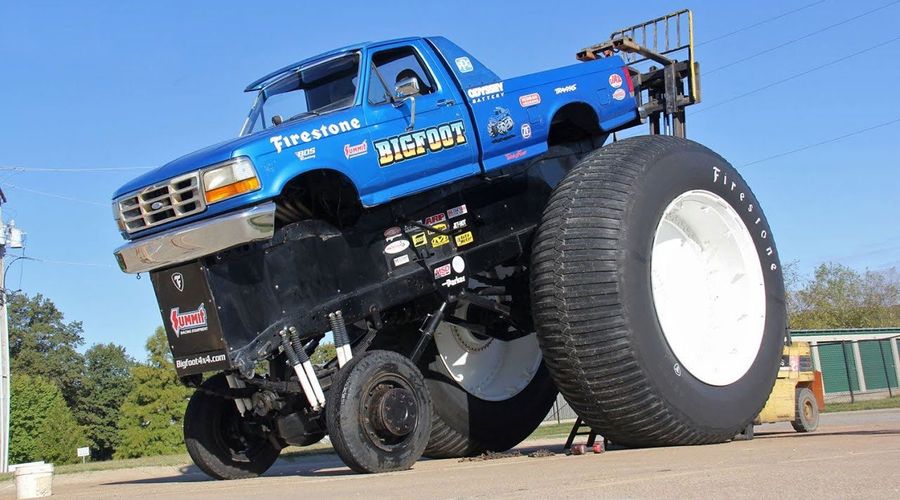
The trailing arms of the front suspension are those from LC 80, but taking into account the specifics of the chassis layout, they “lay down” on the bridges upside down from above.
Like the body, frame, rear springs and 170 liter fuel tank from Suburban also "fit" into the concept of building a bigfoot.
ZIL-157 razdatka "sank" between the body and the frame so that it does not need additional protection. Its second exit back due to the absence of the third bridge will be idle for now, but in the future it is planned to use it to drive the water propulsion.Steering combined, using a Suburban gearbox, the engine radiator was left from the same model - its parameters are quite sufficient. The fuel tank was also used from the "American" - its capacity of 170 liters does not yet make you think about an additional supply. But the fuel filter, as reliable and very efficient, is the native Khinovsky, but an additional one will be installed.
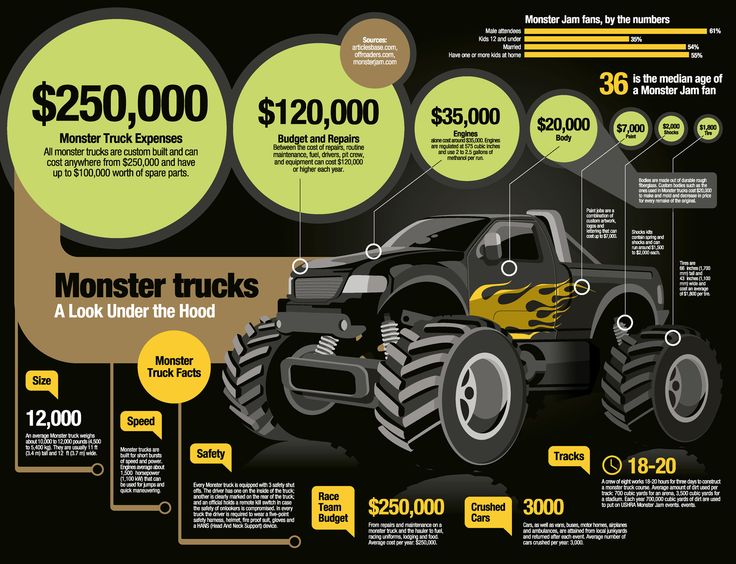
The hydropneumatic clutch, of course, is also native to Hino, besides, its compressor will later be used to install a remote wheel inflation system from the GAZ-66. In the cabin, except for the integration of new transmission controls into the space between the seats, everything will remain like that of the Suburban.
I happened to meet Bigfoot just on the day of his first test ride. Still with some shortcomings, but important parameters of the machine were established. For example, it quickly became clear that the "duty" brakes of the GAZ-66 were not suitable - as planned, suitable disc brakes would be installed.
But the main thing that I immediately understood was that the power link turned out to be more than suitable. The Hino diesel engine with 170 horsepower at 2900 rpm, with a maximum thrust of 450 Nm at 1600 rpm, and the ZIL-157 transfer case surprised with their ability. Even on the “upper lowering” wheels, they seemed small to Alexei: there is plenty of traction, but the speed is low - you can’t really accelerate on the “track”.
On the second lowering, bigfoot is completely similar to a tractor.
However, real off-road testing is yet to come, after that the final verdict of the author about his big project will be. By the way, on public roads the car rolls elastically, but evenly and not hard - all the potholes “break” somewhere below, like waves on the tanker’s hull, without causing any concern to its “team”.
That's right, something is missing from the impressive cladding - yes, the car is still waiting for the installation of a suitable bumper and the 16000th winch.
Building Bigfoot (Bigfoot, Monster Truck)
If you are thinking of building a truck like Bigfoot, then know that you will need about $ 150,000 and a lot of time for development and construction, and you will not be able to drive it on public roads because the width of the average monster is 3.5-4 meters or more. It is worth noting that when transporting Bigfoot, huge wheels are replaced with ordinary ones. cargo, which can significantly reduce the dimensions of the pickup truck.
cargo, which can significantly reduce the dimensions of the pickup truck.
Patrick Enterprises builds most of the Bigfoot monster truck battles and is one of the most respected companies in the industry. Take as an example of construction one of the company's trucks, built in 2010 and referred to as the Samson monster truck.
So: Here is an approximate sequence for building a truck.
The construction of a Monster Truck begins with the design and fabrication of a frame made of steel chromansile pipes with a diameter of 2-2.5 inches.
After painting the frame, the front and rear axles are hung on it. Bridges are taken mainly from the military trucks with planetary gears with a large gear ratio, which allows turn huge wheels 1.7 meters in diameter and 1.1 meters wide. Both axles are leading and have steering. That is, a 4x4x4 scheme is used (4 wheels, 4 driving wheels, 4 steered wheels) Rear steering connected at will, from the cab by the driver.
The engine and transmission are installed in the middle of the structure, this is advantageous in terms of weight and maintenance, as well as replacing the power unit. The engine is powered by methanol and has a displacement of 575 cu.in. or 9.42 liters. Paired with a supercharger, such a motor develops 1500 hp and more, which allows you to accelerate a four-ton truck to hundreds in 4 seconds.
The engine is powered by methanol and has a displacement of 575 cu.in. or 9.42 liters. Paired with a supercharger, such a motor develops 1500 hp and more, which allows you to accelerate a four-ton truck to hundreds in 4 seconds.
Suspension uses extra long travel suspension struts, up to 4 per wheel. Without the use of springs, only high pressure nitrogen works well in these operating conditions. The average cost of such an engine is $40,000 Every year, teams have to fork out for 5 engines to participate in the show!!!
Body panels are made from composite materials and are purely decorative. Some big feet have at their disposal several sets of decorative panels. Participating in different shows, they are always in a new guise. The average cost of manufacturing a carcass shell from scratch is $50,000
Although, you can order a remake of an existing carcass for about $3,000.
With the big wheels fitted, the Samson is ready to go. In the US, truck racing ranks first among all possible auto shows
In the US, truck racing ranks first among all possible auto shows
Tire cutting is an important and integral part of building a Bigfoot. This procedure is necessary for
to lighten the rubber and form the required tread pattern. Trimming one
tire takes about 50 man-hours of work and costs about $2,500. The tire at the same time loses weight by an average of 100
kilograms. as a result, the wheel with the disk weighs 350 kg.
The total number of vehicles crushed by such wheels reaches 3000 per year!!!
Raw tires for Monster Truck you can immediately see the difference in the tread.
The 70s of the last century became for the automotive world, something like a starting point, the most productive time, when most of the different auto movements were started and many different directions appeared. Most of the races took shape in what we now see, it was during that period, shows, competitions, tuning trends in the new and old world, as well as in Japan.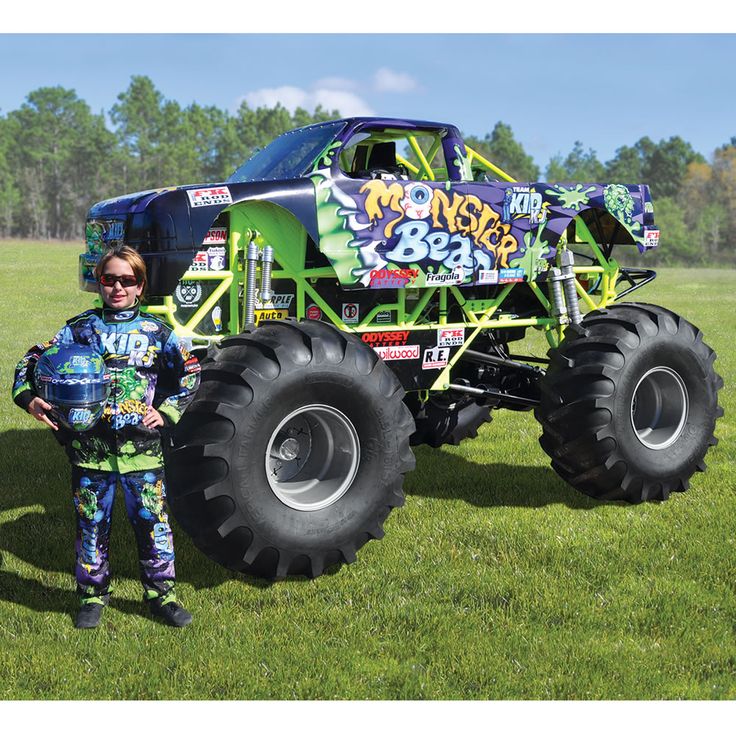 In those distant years, Bob Chandler, a builder from a small American town, decided that bolting tractor wheels to a pickup truck was fun, to say the least. Everything, as usual, the enthusiast became the founder of an entire automotive subculture, which has become insanely popular on the American continent.
In those distant years, Bob Chandler, a builder from a small American town, decided that bolting tractor wheels to a pickup truck was fun, to say the least. Everything, as usual, the enthusiast became the founder of an entire automotive subculture, which has become insanely popular on the American continent.
At first, Chandler's passion was at the level of off-road racing through puddles and bumps, and he did not differ from other participants in the discipline in anything remarkable. Everyone had the same problems - old cars required constant repairs, there were no spare parts, tuned parts too.
He came up with the idea to fit an old Ford with 1.2 meter wheels, but the wheels no longer fit in the standard SUV arches and the thought process began. The challenge is accepted, either he will install them and the car will go, or he will finally break his old pickup truck. The process began, special spacers were installed under the frame (made by Bob himself), the suspension, chassis, transmission and engine were modernized.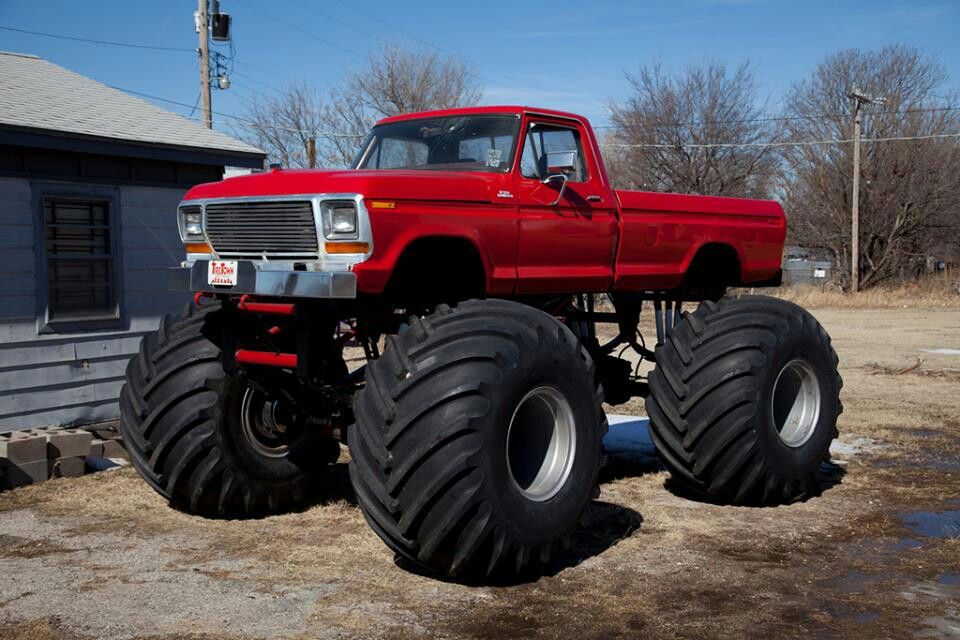 From afar, the car began to look like modern monster trucks. Chandler was pleased with his brainchild and hastened to demonstrate the creation to the world. He agreed with the organizer of the Nascar race that before the race he would arrange a small performance in his modernized car, the idea was accepted with a bang. The audience cheered. Bob began to modify his car in every possible way and perform at various shows and performances. One fine day, in a conversation with the organizer of car racing, he said that he was worried about the unreliability of such cars. After each show, they needed to be repaired, to which he was told that this comes from his "big paws". It was about huge wheels, which essentially tore the car's components apart. In English, big paws sound like bigfoot, hence the name of the vehicle.
From afar, the car began to look like modern monster trucks. Chandler was pleased with his brainchild and hastened to demonstrate the creation to the world. He agreed with the organizer of the Nascar race that before the race he would arrange a small performance in his modernized car, the idea was accepted with a bang. The audience cheered. Bob began to modify his car in every possible way and perform at various shows and performances. One fine day, in a conversation with the organizer of car racing, he said that he was worried about the unreliability of such cars. After each show, they needed to be repaired, to which he was told that this comes from his "big paws". It was about huge wheels, which essentially tore the car's components apart. In English, big paws sound like bigfoot, hence the name of the vehicle.
Modern Bigfoots are not the production cars that were put on huge wheels - they are a specially prepared vehicle with a monstrous engine located in the middle, a 4X4X4 wheel arrangement and a plastic body that resembles an SUV.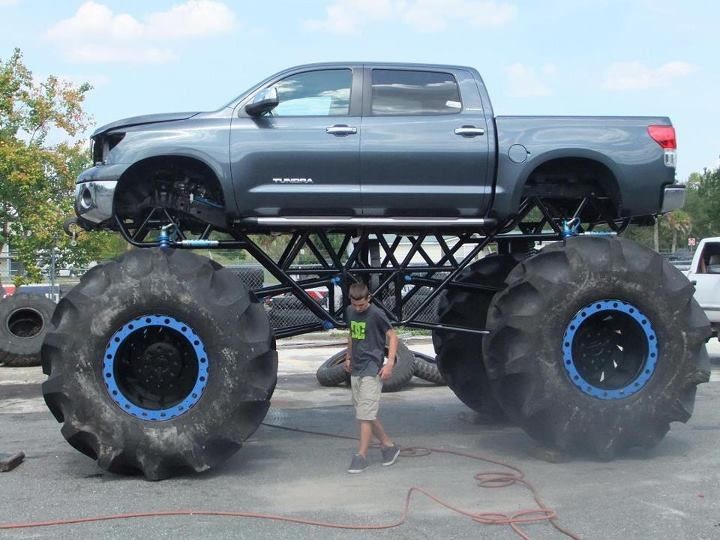 Cars with a capacity of more than 1500 hp, performing at colorful car shows, completely lost touch with the world of real cars, were called Monster -Truck .
Cars with a capacity of more than 1500 hp, performing at colorful car shows, completely lost touch with the world of real cars, were called Monster -Truck .
Bob Chandler pioneered not only the idea of a car with big wheels, but also the action that can be done with it. He thought it would be interesting to see how the huge wheels of his car could drive over several cars without leaving a wet spot on them. None of the spectators expected such a performance and the movement quickly began to gain momentum, turning demonstration performances into a whole sports discipline with its own rules, standards and records. In the USA, the shows became mega popular, cars improved, modernized and became more powerful. Great power needed a good strong transmission, a reliable frame (reinforced with railway rails), suspension, etc., all this made the already heavy structure heavier, the weight of the machines reached 10 tons. Such a mass, even with a powerful engine, did not allow Bigfoot to do breathtaking stunts, and Bob Chandler thought about a radical alteration of the car.
They decided to build a new truck on the principle of racing cars (minimum weight with maximum power). Instead of a standard pickup truck body, a light tubular frame was built, the engine migrated to the middle of the structure, a spring suspension was installed, and the appearance of the car was created by a plastic body stylized as an SUV. The lightweight design helped the monster to pirouette on the track and even do somersaults.
How to build a monster truck and how much does it cost
It all starts with a space frame made from 2"-2.5" chromoly tubing. The frame design is designed on a computer with the calculation of the loads acting on each part. The dry weight of the frame is no more than 800 kg, which gives great opportunities for the future car. Next, wheels with a diameter of 1.7 meters and a weight of more than 500 kg are installed. These are standard tractor wheels that need to be adapted to Bigfoot. And this means that their weight should be reduced.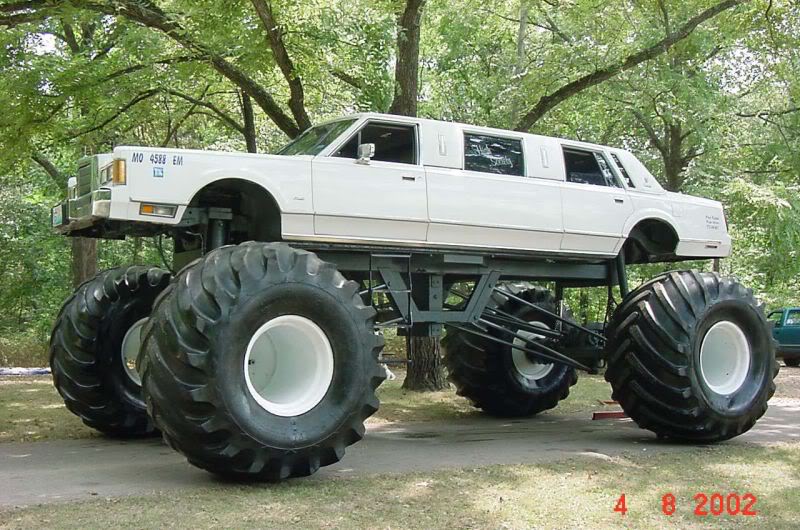 This is achieved by replacing standard rims with lighter ones and trimming the tread. After all the manipulations, the wheels weigh about 350 kg. After creating the frame, they assemble the engine, which is based on the good old bigblock with a volume of 9-9.5 liters with mechanical superchargers from drag cars. Similar internal combustion engines run on methanol, giving out 1500 hp and more. Bigfoot fuel consumption is measured in meters and is 20 liters per 100 meters.
This is achieved by replacing standard rims with lighter ones and trimming the tread. After all the manipulations, the wheels weigh about 350 kg. After creating the frame, they assemble the engine, which is based on the good old bigblock with a volume of 9-9.5 liters with mechanical superchargers from drag cars. Similar internal combustion engines run on methanol, giving out 1500 hp and more. Bigfoot fuel consumption is measured in meters and is 20 liters per 100 meters.
Monster trucks use three-speed automatic transmissions with heavy components and a large torque converter. Coupled with a dreg engine, they allow the colossus to accelerate to 100 km / h in 4-5 seconds, jump over 60-meter obstacles, and also do somersaults. Jumping and stability are provided by dual shock absorbers filled with nitrogen and having remote oil reservoirs. To ensure the strength of the suspension and transmission mechanisms, good old axles with planetary gears are used, which reduce the load on the drive shafts and increase the ground clearance.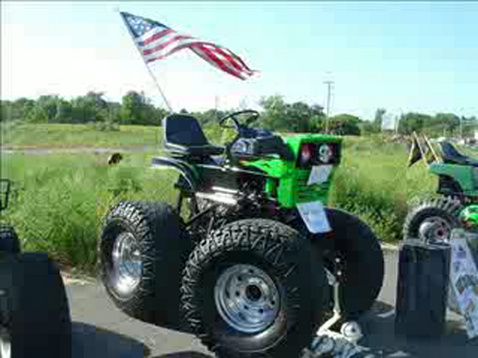 Bigfoot has a 4x4x4 wheel formula, which means that the driver has full control over the wheels and therefore a unique steering. Standard off-road steering cannot handle such loads, so hydraulics are used to turn the wheels, and pressure is simply applied to the steering ramp. A fiberglass dummy is used as a body, repeating the silhouette of a standard pickup truck or station wagon.
Bigfoot has a 4x4x4 wheel formula, which means that the driver has full control over the wheels and therefore a unique steering. Standard off-road steering cannot handle such loads, so hydraulics are used to turn the wheels, and pressure is simply applied to the steering ramp. A fiberglass dummy is used as a body, repeating the silhouette of a standard pickup truck or station wagon.
From fuel consumption, it is clear that participation in such a show is expensive and building a car costs a pretty penny. To design a bigfoot, on average, you need from 150 to 200 thousand dollars. At least $500,000 spent on annual maintenance .
Today I managed to see how these very monsters are assembled (of course, we are talking about cars, I didn’t have a chance to watch how Godzilla hatched). Several of them, before my eyes, turn from a pile of parts into pickup trucks, after which they are mounted on, ahem, wheels.
Of course, they do not do it themselves, like transformers, but they are assembled by a specially trained master and pilot.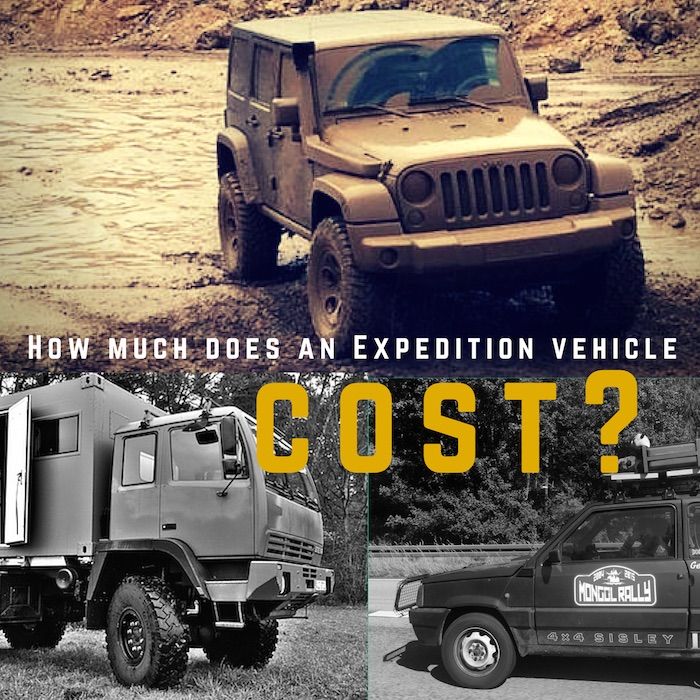 Preparations are in full swing for the big show DO DAMAGE (deal damage, destroy), which will take place in St. Petersburg tomorrow, March 21, and next Saturday, March 28, in Moscow.
Preparations are in full swing for the big show DO DAMAGE (deal damage, destroy), which will take place in St. Petersburg tomorrow, March 21, and next Saturday, March 28, in Moscow.
On the site, I was able to talk to the pilots tinkering with their "things". Every car is a piece goods. At the heart of giant pickups that will destroy everything in a row at Russian shows are bodies from the Ford F-250 and Chevrolet Silverado, but in fact this is a complete custom created by pilots and mechanics.
The monsters weigh approximately 5 tons and are powered by 1,500 hp motors that consume methanol. During the show, these cars burn 80-100 liters of fuel, and since the tank is designed for 80 liters, they have to refuel right during the event.
The pilots themselves assemble the monsters, and together with the show "Monster-mania" only 8 servicemen go. Assembly before the show takes a whole day, because, in addition to installing the wheels, absolutely all systems must be checked so that there are no unforeseen problems during the execution of any tricks.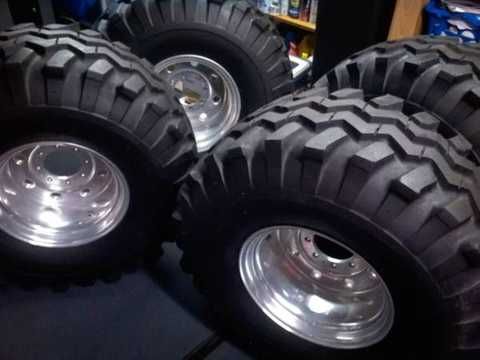
Breaking and crushing is not an easy job. The loads on the structure are simply enormous - 5-ton machines take off to a height of more than 10 meters and fall on the concrete floors of the show grounds. According to the pilot of the British crew Anthony, the maximum height to which his monster truck took off was 42 feet (about 13 meters). On landing, the suspension deployed its full travel and experienced a 190G g-force. For comparison: the maximum short-term overload of a car, during which a person managed to survive, was 214G.
1 / 4
2 / 4
3 / 4
4 / 4
The rims are also very durable, because even 15 atmospheres in the tire does not keep the rim from touching the ground when landing. By the way, the wheels are 1.6 meters in diameter and 1.1 meters in width.
The pilots themselves experience loads up to 5G (the "ceiling" for a person is 15G for 3-5 seconds). As Swedish pilot Peter told me, driving a monster is no more difficult than driving an ordinary car.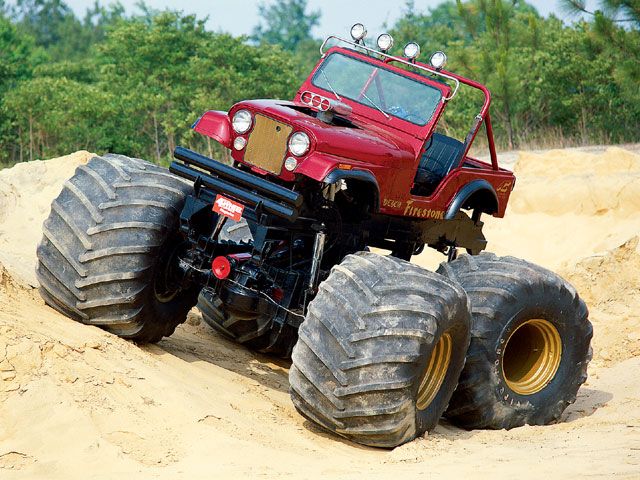
The main difficulty is to control it so that all movements look spectacular! Performing stunts on any car is quite difficult. Do not forget that the maximum speed is 160 km / h. From 0 to 100, the speedometer needle jumps in 5 seconds, but it goes down reluctantly in the opposite direction, because the car is very heavy, and the grip of huge wheels with a smooth concrete floor is small.
Contrary to popular belief, the first such unit was not assembled for military purposes and not for access to hard-to-reach corners of our planet. The first monster truck, called Bigfoot (Bigfoot), was originally created for entertainment.
American builder Bob Chandler, in his spare time from bricks and cement, liked to mix dirt on his Ford F-250 SUV. And in order to do what he loves every day more and more fun, he tuned his car day and night. When the trowel and saw got sick of him, he decided to quit his job and help everyone in the creation of crazy SUVs.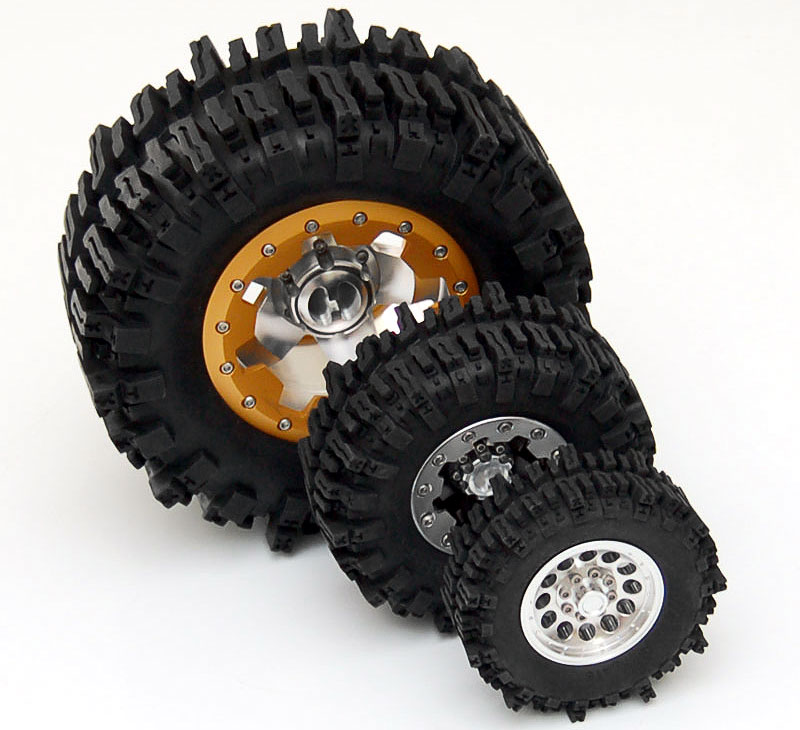
1 / 6
2 / 6
3 / 6
4 / 6
5 / 6
6 / 6
Bigfoot designs were far from perfect, wheels fell off, engines could hardly move 8-10-ton monster trucks, and transmissions kept shattering. But, nevertheless, the units performed their role as a show car. On his Fords, Bob dragged trains, drove through brick buildings, turning them into dust, and most importantly, crushed cars in whole trains. Bigfoot soon acquired swivel mechanisms on the rear wheels, which allowed the monster to spin in place. But this was not enough, flying became an absolute dream for the whole team of "big-legs". Then it was decided to create another monster, having calculated its entire design from scratch.
Sitting at the computers, the engineers created physical and mathematical models for the new pickup truck. The main goal is to reduce weight and increase power. First of all, a space frame was developed.